Five Days and Four Seasons at the World’s End – Ushuaia

At the end of the world, the wild winds blow, the weather is unpredictable and the landscapes are natural and pure. One can imagine what Magellan, one of the first explorers of this region, felt when he passed through the Beagle Canal on his ship. As he sailed in he saw small fires lighting up the land and so called this unknown land “Tierra del Fuego”, the Land of Fire.
Ushuaia, the capital of the Tierra del Fuego, has been our ultimate destination in Argentina since we arrived in this country. Literally the southern-most city in the world, after having travelled over 5,000 km to get here, I can say it’s been well worth it to see it for ourselves.
We arrived here from Puerto Natales two buses, one mini-bus and 13 hours later. Many travellers fly here because of the fact that it’s reasonably difficult to get to. Winding through high mountain ranges, in sleet and snow we arrived at a vantage point northeast of the city, and to my surprise, the city at the end of the world is a lot larger and built-up than I would’ve imagined. It was nighttime and somewhat similar to the first sighting of Ushuaia by Magellan, lights had lit up the harbour, right along the coast, while the snowy mountains behind it were glowing under the moonlight.
We first checked into ‘Freestyle’ Hostel, which is part of the Ho.La chain of hostels. Unlike the other Ho.La hostels however, there was seemingly nothing eco about this hostel and at night it turned into a party hotspot, right next to the rooms. We quickly changed hostels to stay at Patagonia País, a 10 minute walk north of the city. This hostel was perfect for us, friendly atmosphere and staff, tranquil and rustic, the perfect place to hang out for a few days.
The first two days the weather was typically volatile. Four seasons in one day, it started out sunny, which quickly turned to rain, gale force winds and finally snow or rain. So we spent these days exploring the city, relaxing, and drinking copious amounts of delicious hot chocolate from Laguna Negra.
Hearing a lot of good things about the region’s seafood, we headed out one night to a Chilean restaurant called Chiko, recommended to us by fellow travellers. It was easily the best meal we have had in Argentina so far.
The highlight of the city itself is its famous Museo Marítimo. Although entry is a little pricey, it’s worth the visit to see and learn about the city’s history, the first Yámana People, and visit some fine art from around the country. Entry is 70 pesos for foreigners (locals get in for 40) and is valid for two days.
Tierra del Fuego was first established as a penal colony in 1899 when prisoners were sent to Isla de los Estados. Since 1902 the prison functioned in what is now the Museo del Presidio until its closure in 1947, and it was an important part of the region’s socio-economic development. The prison was built by the prisoners, who also built the streets of the city around them, which later became Ushuaia.
Ushuaia in Yámana means ‘bay penetrating towards the west’. The province is the youngest in the country, only being officially established in 1990, but its history goes beyond that date.
The Yámana People were the island’s first habitants. Living nomadically, they populated the areas south of Isla Grande de Tierra del Fuego, on the coast of the Beagle Canal to Cape Horn. Living in this harsh environment, they consumed a high-calorie diet of sea lions, whale blubber and seafood. Unfortunately when the first European missionaries settled in the area, they brought changes to the Yámana’s diet, infectious diseases and alcoholism, which eventually wiped out the Yánama population. There is only one Yámana left today. She’s 80 years old and heads up one of the estancias in the province. So once she is no longer here, the Yámana People will sadly have officially died out.
Many visitors come here to explore the National Park Tierra del Fuego, but in wintertime, most of the tracks are closed. So we opted to make the most of the season and visited the Centro Invernal las Cotorras, a winter village that offers various winter activities such as Nordic skiing, husky sleigh rides, ski-dos, toboggan runs and restaurants selling regional specialities like Patagonian lamb.
We took a minibus on Avenida Maípu down by the bay. Fifty pesos each got us a ride to the park and back. Once there we decided to try Nordic skiing, which neither of us had done before. It took us (and by us, I mean me, the ‘kangaroo on skis’ that they call me) a little while to get the hang of it, but once we did we were off, on the trail, deep into the snowy landscape, and in the footsteps of pumas.
Two hours later we returned exhilarated by the fresh mountain air and decided to walk the 500 metres to Cerro Castor, a nearby ski station. It is also the country’s youngest ski centre, and as such, there isn’t a great deal in the village to do or see.
Blue skies and mild temperatures highlighted our last day in Ushuaia. We had booked a boat trip through the Beagle Canal a few days earlier, and unfortunately (or fortunately) wild weather stopped us from going until now.
Most of the boat excursions out on the canal are held on large catamarans with sometime hundreds of tourists, but one company that was also recommended to us by fellow travellers, Tres Marias, is different.
We were 10 people aboard a small blue fishing boat, as we headed out onto the water towards the famous Beagle Canal. The sea was calm, the sun was out and it was the perfect day to be on the water with spectacular views of the Olivia and Cinco Hermanos mountains.
The boat’s guide Mariano came and explained a bit about the area and its history and we made our first stop in front of the Isla de los Lobos (Sea Lion’s Island) the natural habitat of sea lions and the imperial cormorants (related to the penguin family).

The animals, like us, were out basking in the sun and enjoying the beautiful weather. There were hundreds of them on this tiny island, and it was quite an impressive sight.
We then sailed onto the Isla ‘H’, an exclusive island for use only by the Tres Marias crew. The island is named that way by its form – a small foreshore joining two islands together in the form of an ‘H’. Mariano took us on a tour of the island, showing us native flora and fauna only found on the island. Responsible tourism practices are important here – stick to the tracks, take nothing but photos and leave nothing but footprints. Unfortunately, the unprotected environment is exposed to pollution washed up by the waters.
Mariano described in detail the way the island was used by the Yámana People. Families apparently came to the island for shelter from the harsh winds, when winter temperatures would get too much, they would hover in one corner of the island and build fires for warmth and food before moving on.
We started to understand the vulnerability of these People when the beautiful climate quickly turned sour. The winds picked up and it started raining, so we all scrambled back on the boat and we navigated our way back to shore in the tiny boat through high winds and crashing waves.
There’s nothing like a bit of adventure to finish our trip to the end of the world. Back to Buenos Aires we go, on our next adventures heading north, towards Bolivia, Peru and Ecuador.
Comments
2 Responses to “Five Days and Four Seasons at the World’s End – Ushuaia”Trackbacks
Check out what others are saying...-
[…] in Ushuaia we had seen a documentary about a weaving cooperative and I was mesmerised by the colours and their […]



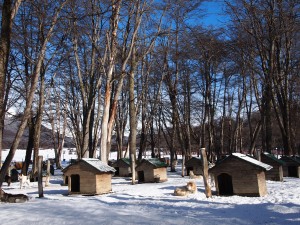

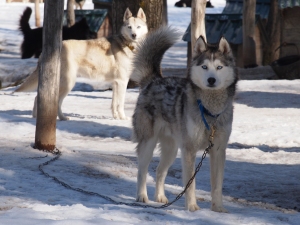

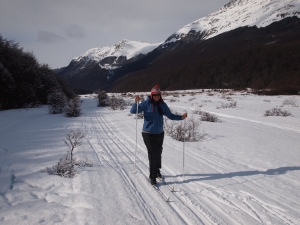
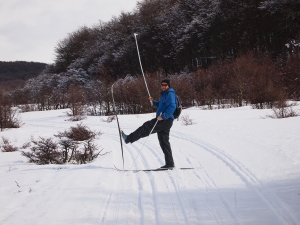





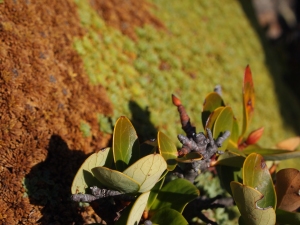






I am often to blogging and i really appreciate your content. The article has really peaks my interest. I am going to bookmark your site and keep checking for new information.